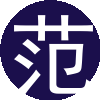[解析]
(1)A.推理判断题。根据第一段People are expected to sort their household waste into seven separate categories,including food,textiles,cartons and metal.But what really makes the system stand out is the bright colour code.人们被要求将他们的生活垃圾分成七类,包括食品、纺织品、纸箱和金属.但真正使这个系统脱颖而出的是明亮的颜色代码;根据第二段The bags arrive all jumbled up because they're collected altogether,once a fortnight from outside people s houses.这些袋子乱七八糟地堆在一起,因为它们是每两星期从人们的家外收集一次的。可知,埃斯科特纳的居民把生活垃圾分类放在不同颜色的袋子里,故选A。
(2)C.细节理解题。根据第二段But thanks to those bright colours,scanners can select the bags and separate them efficiently.但是由于这些明亮的颜色,扫描仪可以选择袋子并有效地将它们分开。可知,明亮的颜色代码的优点是让分拣员更容易给袋子里的垃圾进行分类,故选C。
(3)D.词义猜测题。根据第二段Waste that cannot be recycled is incinerated at a local plant to generate electricity.不能回收的废物在当地的一家工厂焚烧发电。可知,它们可以被用来产生电能,因此此处是说不能回收的垃圾在当地的工厂焚烧以产生电能,因此画线词词义为"焚烧的",A.washed洗了的;B.broken打碎的;C.rescued拯救的;D.burnt燃烧的。故选D。
(4)B.标题归纳题。根据第一段Rainbow ﹣coloured rubbish is the colourful waste created by a Swedish city with a unique recycling system.彩虹色的垃圾是由瑞典一个拥有独特回收系统的城市产生的五颜六色的垃圾。可知,本文要介绍的是瑞典城市埃斯科特纳独特的垃圾分类办法一用不同颜色的袋子区分不同种类的垃圾,B项(一个瑞典城市的回收工作)适合作文章标题。故选B。
